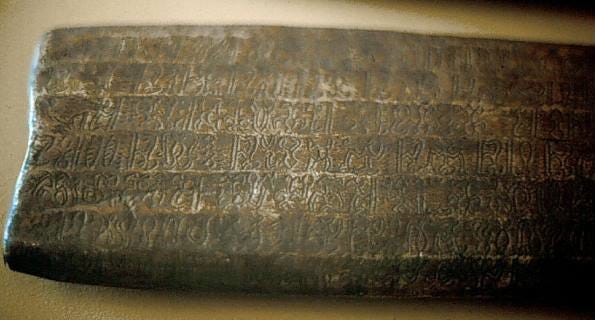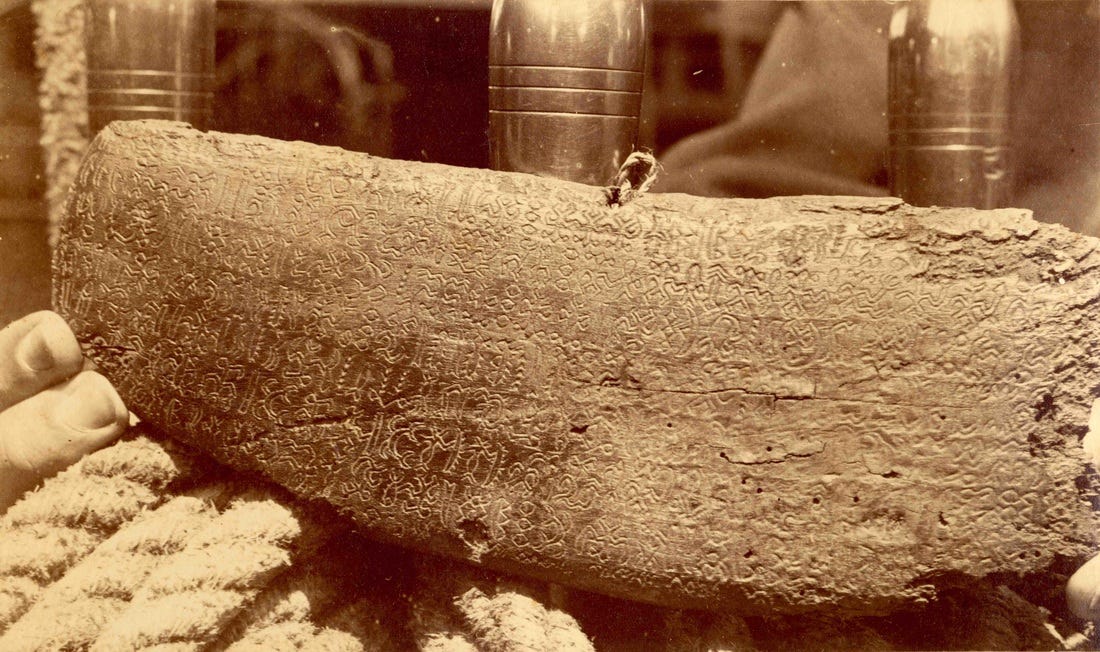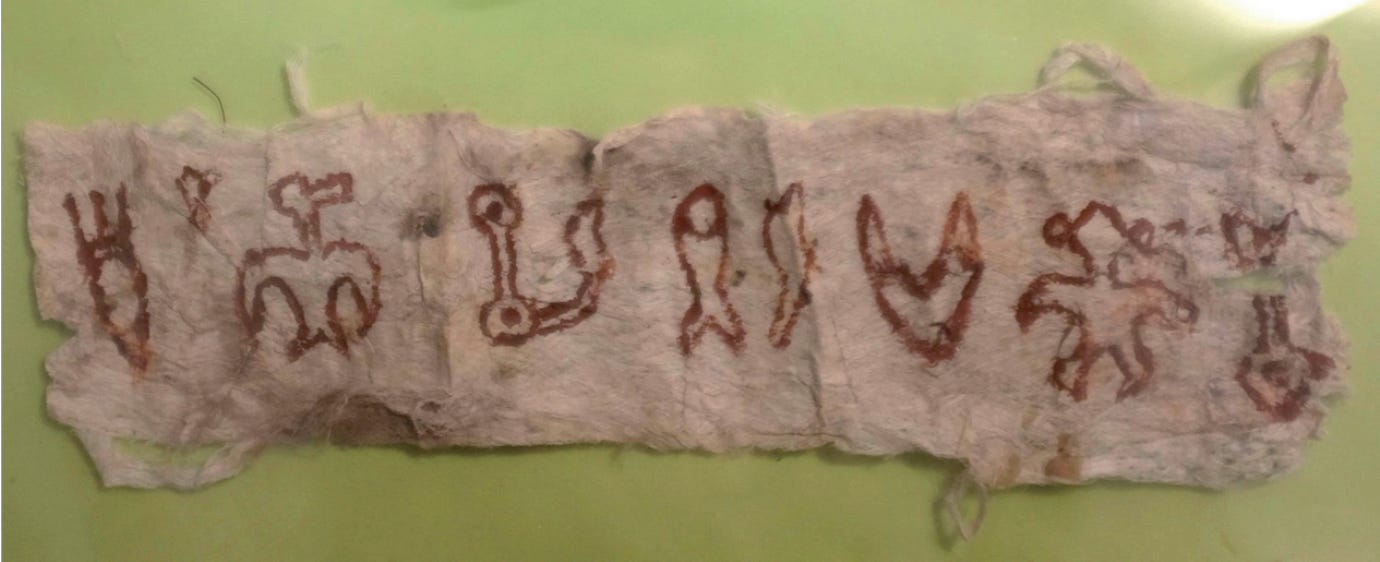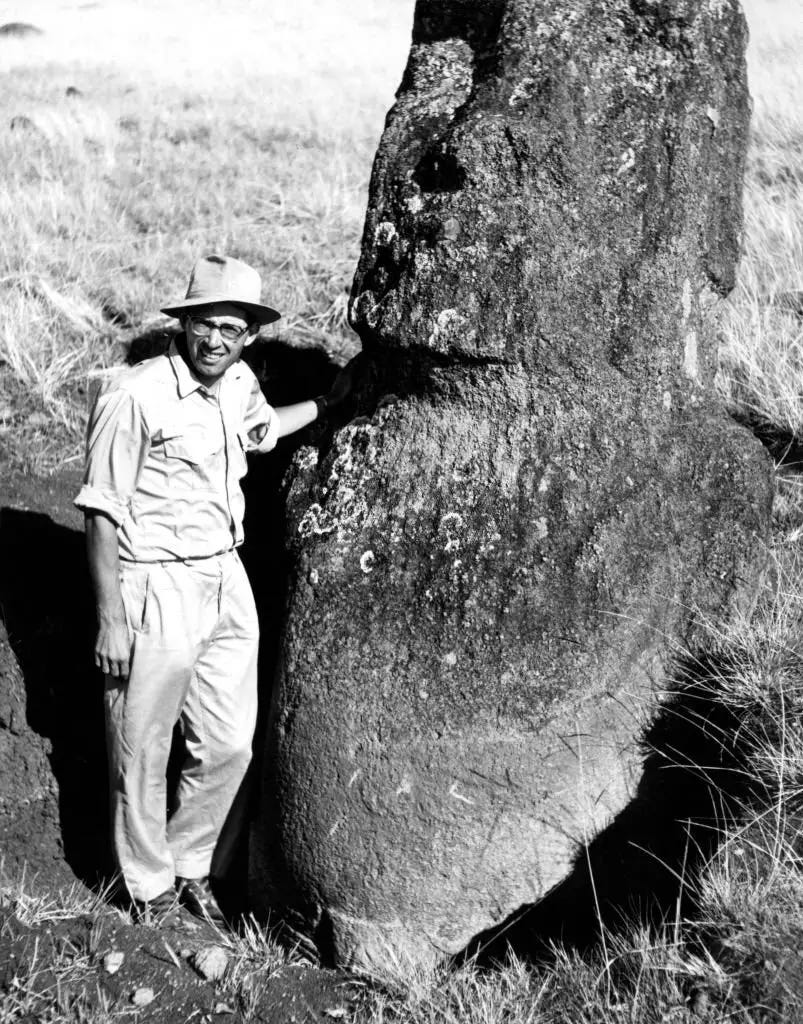Rongorongo in 2023 (pt. I)
Some thoughts about the undeciphered Rapanui script.

In short, Rongorongo is an undeciphered Rapanui script and one of the very few independently invented writing systems in human history. Since research on it began, only about two dozen artifacts containing the script have been documented. These artifacts are generally wooden boards or tablets (kohau rongorongo) that contain glyphs arranged in parallel lines covering their entire surface on both sides. The glyphs were traced in reverse boustrophedon, with every other line having them inverted so that the text is not interrupted by breaks. Unfortunately, several Rongorongo boards were found partly destroyed, rotten, or eaten by worms or termites, resulting in incomplete texts. A few other objects containing the Rongorongo script also exist, such as a staff, a birdman figure, a couple of reimiro breastplates, and even a snuffbox. Local traditions claim that the script was only known by a limited number of literate elites called maori rongorongo. It seems that all of them perished during the catastrophic events of the 1860s, and thus, not one soul remained that could reveal Rongorongo's secrets. The information summarized in this paragraph is pretty much all that seems to be certain about the script.
I am not a Rongorongo expert, but I have always been fascinated by the history of its research. The Wikipedia article on it provides a surprisingly good summary. After the moai, Rongorongo has been the most studied aspect of Rapanui culture by both serious scholars and amateurs alike. In fact, it overshadowed research on the moai and megalithic architecture for several decades in the 19th century. For a while, it was the main angle for Westerners to study Rapa Nui, the island, and Rapanui, the people. However, unlike the moai, no indigenous Rapanui has led any work or research into Rongorongo to this date.. The ones who have been involved are only considered “informants” since the early days: like Metoro Tau’a Ure who attempted to read a tablet for the French Bishop in Tahiti, Tepano Jaussen in 1873. One of the likely reasons is that there are no authentic Rongorongo objects on the island. All of them have been taken away, and almost all of them are displayed (or stored) in foreign museums from Santiago to Saint Petersburg, through Washington, Paris, London, Rome, etc. As things stand, "Rongorongo studies" is a Western discipline dedicated to studying museum objects and, unlike "Moai studies," has not been enriched by Rapanui scholars.

The 20th Century saw a race for script decipherment akin to the space race: Linear B, Mycenaean Greek, Mayan... all of them were thoroughly studied by linguists, philologists, and researchers from different origins and schools until the code was broken and a decipherment followed. Rongorongo went through the same level of scrutiny. The Russian linguist Yuri Knorozov, who led the team that successfully decoded the Mayan script, aimed for a short while to decipher Rongorongo in the 1950s. He and his energetic colleague Nikolai Butinov didn't come even close here. Likewise, the German philologist Thomas Sylvester Barthel, who made his own ultimately wrong attempt at decoding the Mayan script, took the decipherment of Rongorongo as his very own personal quest for revenge. After his visit to Rapa Nui in 1956-1957, Barthel brought forth the one mandatory book that every rongorongo aficionado needs to study thoroughly: Grundlagen zur Entzifferung der Osteinselschrift, published in 1958. As important as Barthel's contributions are for a better understanding of the glyphs and the structure of the texts, he did not reach an accepted decipherment either
By the 1990s, very few serious scholars would think about tackling Rongorongo. The scarcity of source material and the lack of proper documentation of the Old Rapanui language (which is very different from even the early 20th century Rapanui) made it a daunting challenge with almost zero prospects of success. The last great study came from Steven Roger Fischer, who published his seminal monograph, Rongorongo: The Easter Island Script, in 1997. However, just like Barthel in the 1950s, Fischer didn't come close to an accepted decipherment either. By then, very few people remained interested. A small new generation of Rongorongo researchers has taken the baton, but with very little impact, even from serious, scientifically-driven authors like Paul Horley and Rafał Wieczorek. Have we come closer to a decipherment of this ancient Rapanui script? It doesn't seem so. New parallel passages, insights about the incision of the glyphs and how they were traced, or being able, through better optical scanning, to see one more glyph on a rotten tablet are only tiny victories.
And this doesn’t even take into consideration that Rongorongo studies have been sequestered by hacks and crackpots. Just like at different times in history, research into the moai had charlatans like Erich Von Däniken or TV personalities with eccentric haircuts from The History Channel ridiculously claiming “aliens did it”, Rongorongo has been suffering from a similar disease. Just like the internet has brought back flat-earthers, it has brought back hyperdiffusionists or people who believe Rongorongo is connected with the Indus Valley script, half a planet and 4 millennia away. And then you have Sergei Rjabchikov, a clueless armchair researcher who, armed with William Churchill’s Rapanui-English dictionary from 1912, self-publishes dozens of “articles” on Academia.edu with his alleged “reads” of Rongorongo. All of this is not new and not exclusive to Rapanui or Rongorongo studies. It’s the endless return of the old, tired, and demonstrably wrong ideas that plague the information era. The damage this causes to serious Rongorongo studies has not yet been assessed.

The most recent and evident fraud about Rongorongo came to my attention a few weeks ago. Authors Robert M. Schoch and Tomi S. Melka published an article in an obscure Slovakian journal in 2019 about an inscribed piece of mahute barkcloth dubbed the "Raƞitoki Fragment." An anonymous owner of the piece allowed the authors to photograph and study it and gave them a fanciful tale about an ancestor named Albrecht van Houten, who supposedly traveled to Rapa Nui in March of 1869. A local woman named "Raƞitoki" allegedly provided him with the object. However, Catholic missionaries who were present on Rapa Nui at that time and wrote several dozens of letters kept a record of every ship that called on the island. There is no vessel that called in Hanga Roa, and no mention of any Albrecht van Houten in March of 1869. Raƞitoki is not a female Rapanui name recorded anywhere in the abundant genealogical, baptismal or burial records from before 1871. The piece looks exactly like typical painted barkcloth souvenirs sold to tourists between 2010 and 2020. I don't want to speculate on whether Schoch and Melka had ill intentions or if they were tricked by a con artist. Still, they would have known better had they left their armchairs and come to visit Rapa Nui during their research into the island's script or talk to some local experts so they wouldn’t waste their time.
The decline in serious scholars, linguists and philologists, getting involved in the discussion, since they consider Rongorongo a lost cause, has generated this strange scenario where discussion in the field is lifted by amateurs, dilettantes and authors closer to the fringe. A few of these nonsensical approaches have been even published in peer-reviews journals, bringing Rongorongo studies closer to its semantic apocalypse. What we should keep in mind, though, is that even an expert with outstanding erudition about Rapa Nui and its traditions like Barthel, and someone like Fischer, who proved a formidable researcher of the script and of his predecessors’ work in the field, ended up putting forward strange, dubious and somewhat absurd interpretations of Rongorongo.
Is AI the next big step forward? Are serious Rongorongo studies going to be revived with the current AI-craze? Seeing their capabilities of coding, it is surprising no one has yet fed a neural network with the glyphs (coded as numbers, for example), with the most reliable old Rapanui dictionaries and vocabularies, and see them try to “read” the boards. Go ahed, dear reader. You might surpass all Rongorongo scholars with a few prompts on Chat GPT or something…


